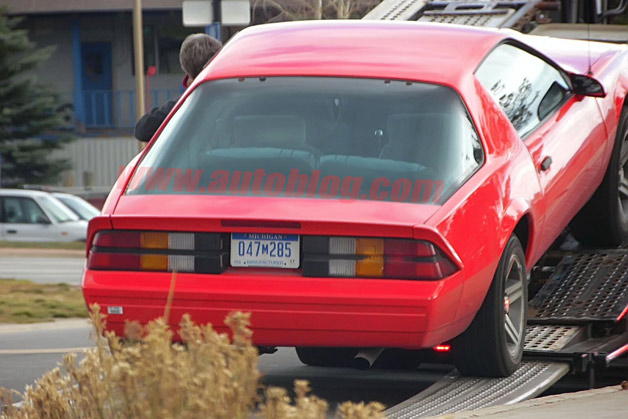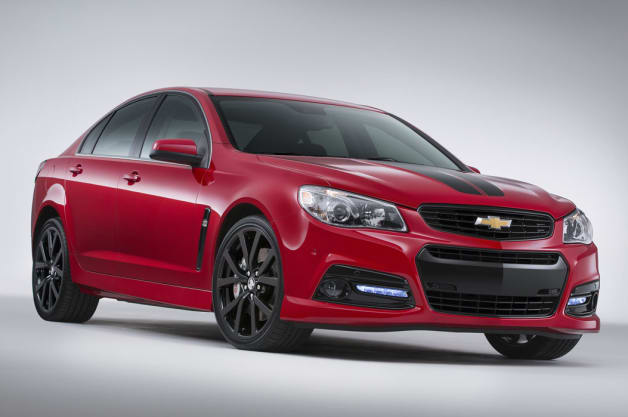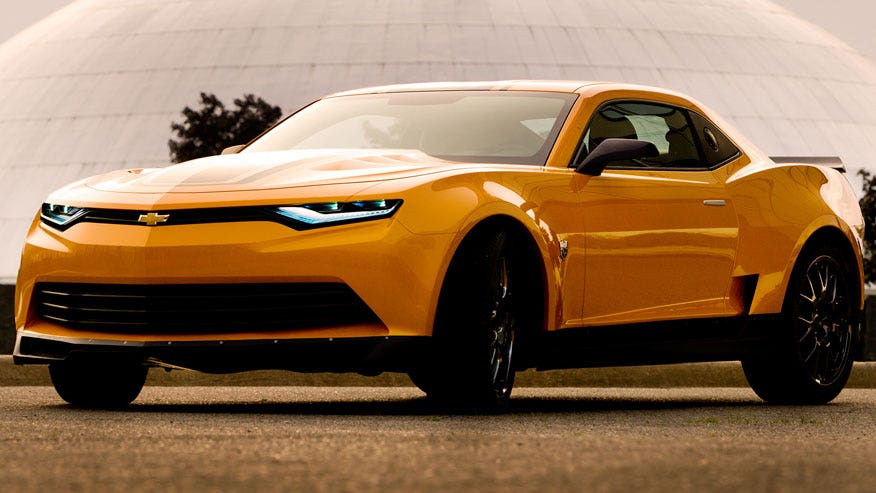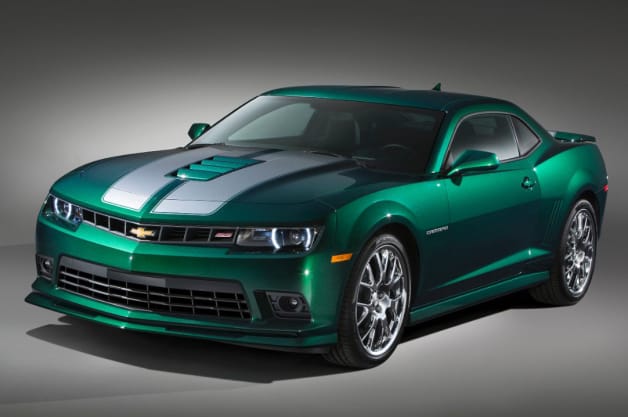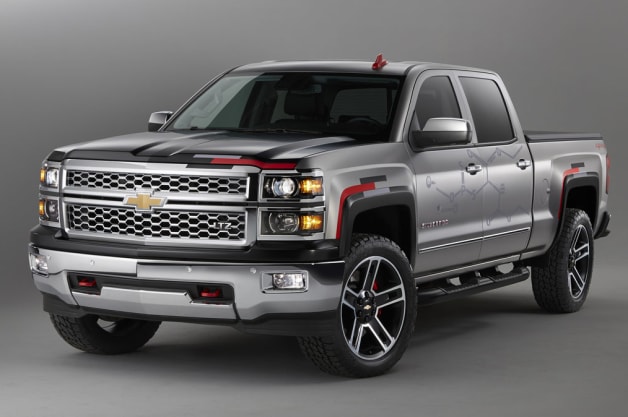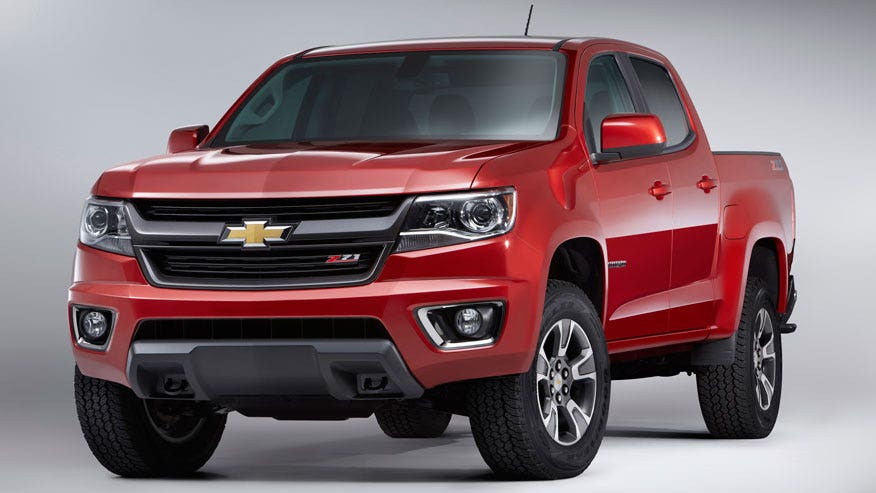
By Seyth Miersma, Autoblog Canada - Be it in the category of luggage, pocket knives, personal computers or cars, the concept of an all-in-one, do-everything product is attractive to a lot of consumers. Why fuss around with stocking your pockets with toothpicks and tiny saws, asks Victorinox, when one well-packaged device can offer up all the functionality that a Swiss Army regular might ever need?
The needs, wants and would-love-to-haves of drivers are no less complex than those of multi-tool wielders, and there are certainly a great many shoppers that require their perfect vehicle to do everything pretty well. A huge percentage of us really only need a couple of seats and the ability to get up to 100+ km/h with a reasonable degree of safety on a daily basis. But that doesn't stop us from wanting a vehicle that can also take our entire family along for the ride, haul a 60-inch plasma back from Best Buy and throw the snowmobile trailer on, just in case the mood strikes to do some sledding.
I pretty much never have to do all of that all at once. Be honest, neither do you. But the groundswell of popularity for SUVs and crossovers - to say nothing of our decades-long love affair with the pickup truck - can trace its roots to that utilitarian mindset.
For many North Americans, for a lot of years now, the perfect answer to the do-everything question has been a small or midsize pickup. Small trucks require compromises in interior space, and their fuel economy generally isn't leaps and bounds better than their full-size counterparts. However, they offer just enough towing and hauling capability to go along with wieldy driving and parking manners, and, critically, a comparatively painless price point. Considering the longtime class-leader Toyota Tacoma is well past its prime, Chevrolet believes the time is right to reintroduce its midsize Colorado, now with more on offer than ever when it comes to livable, daily-drivable, multi-purpose behavior.
Asking fewer compromises than ever before, does this Colorado stack up solidly against the full-size-truck bargains, and the now-ubiquitous small crossovers? I thrashed on one in Southern California in an attempt to find out ...
The Colorado offers a controlled ride with good isolation of road harshness for the driver.
Actually, my stint in the new Colorado (followed by seat time in its GMC Canyon twin ... look for more on that soon) was already the second invitation I'd gotten to wheel The General's new pickup. Chevy officials asked me out to a super-secret early preview of the truck at the company's Milford Proving Grounds this summer, where I was to vet the ride, handling and powertrain performance in some not-production-ready prototypes on a piece of road course that incorporated sections of diverse surfaces (broken concrete, washboard ridges, etc.) as well as a section to go flat out and attempt hard cornering. What's more, the team even brought along a Toyota Tacoma and a Nissan Frontier for direct comparisons, as well as a Ford Escape to prove its competitive-with-crossovers theory.
Performance in terms of restricting vibration and harshness was pretty excellent on Chevy's home turf. The Colorado offered a controlled ride with good isolation of road harshness for the driver. In fact, the most basic four-cylinder-powered Colorado seemed tuned to mirror the placid ride of the Escape, which is pretty high praise considering how rough-and-tumble the Toyota and the Nissan seemed on the same roads.
In terms of that aforementioned fast cornering; it's safer for me to simply recommend that this shouldn't be your move if you're looking for some kind of NASCAR truck for the road. You probably wound't expect an I4 Colorado to offer huge lateral grip and ultra-precise steering, which is good, because it doesn't. Pushed to anywhere near its limit, the Colorado will offer up safe, benign understeer, as the front tires politely ask that you settle down a little.
For what it's worth, the aged Frontier really felt like the nippiest handler of the three midsize trucks I sampled at MPG, but none of them were particularly spirited.
A 305-horsepower 3.6L V6 engine is available, but the smaller, more frugal, and slightly raspy 2.5L four never felt underpowered for basic commuter duty.
On the roads around San Diego, the story was more of the same. The Colorado was smooth and amiable over mountain roads and through a smattering of California highway traffic, with very low levels of engine, exhaust and wind noise to boot. At cruising pace, the Colorado is every bit as unobtrusive as the most lux'd out fullsize trucks I've driven, and right in the game with CUVs like the Escape and Mazda CX-5.
Unless, that is, you ask up wide-open-throttle from the four-banger, at which point the exhaust note gets pretty pointed and ragged. Be more careful with your throttle inputs, however, and the four will silently steed you along.
Chevy will be happy to sell you a Colorado with its 305-horsepower, 269-pound-feet-of-torque, 3.6-litre V6 engine under the hood, but I was particularly interested in sampling the truck with that smaller, more frugal, and slightly raspy 2.5-litre four. In the service of attempting to do everything well, there just seems to be more potential here for fuel economy and price, without giving up too much in terms of truck-ability.
At 200 hp and 191 lb-ft, the four-cylinder moves the Colorado around confidently but not quickly. I never once felt as though the 2.5 was underpowered for basic commuter duty, though adding more passengers or a bed full of peat moss could slow down the reflexes a bit. There's no question that the beefier V6 is the way to go if you're at all interested in a tangible sense of power, but the four does score some interesting points for the balance of your checking account.
Leading the class, even a small class, in both power and economy is a pretty strong position from which to sell trucks.
Though I drove the six-speed-manual truck at Milford (and loved it, even though the throws were long and the automatic makes a lot more sense for the powertrain), the 6AT will clearly be the volume transmission, which is mostly a good thing. I heard the trans hunting a bit moving through traffic on the highway, but for the most part, it would simply move into top gear as soon as it felt a steady-state cruise, and fade into the background. Kickdowns into lower gears felt a little rough, but not jarring.
Outfitted with that optional automatic trans and two-wheel drive, the Colorado will deliver 11.9L/100km in the city and 8.8L/100km on the highway. Those fuel figures increase to using 12.7L/100km city and 9.5L/100km highway on the four-wheel drive equipped 2.5-litre four and 13.5L/100km city with 9.8L/100km highway if you opt for the 3.6-litre V6 engine under the hood. That's pretty darn good, since the Toyota Tacoma's delivers ratings of 12.2/9.9 city/highway in similar 2WD form, especially when you consider the Taco's 2.7-litre engine tops out at 159 hp and 180 lb-ft. Leading the class, even a small class, in both power and economy is a pretty strong position from which to sell trucks.
And sell they will, if my eyes and the early commentary about the interior and exterior design is a critical factor. (Hint: it's always a critical factor). Even the very basic trim of the truck you see in photos doesn't do a whole lot to dull the Colorado's curb appeal. The 50/50 mix of strength and sport in this design has hooked me since the truck's debut, and the truth is that it holds up in person, too. The first pickup I ever really fell in love with was the Toyota SR5 that Marty used to take Jennifer up to the lake in Back to the Future, and, not to start a turf war with the Taco Club, I think the jacked-up rear stance and sharp front end of the Colorado do similar things on a modern level. Quick, somebody get this truck an agent.
That the new truck's interior is a better place to spend time than the ancient Nissan and Toyota midsizers goes without saying.
But it's the cabin treatment that is the number one reason I believe smiling Chevy product planners when they tell me that the Colorado can work as a CUV replacement. That the new truck's interior is a better place to spend time than the confines of the ancient Nissan and Toyota midsizers goes without saying, but the truth is that it offers comfortable seats, quite a lot of available technology (including 4G LTE wifi), and nice touch points. Yes, the GMC iteration is really the superstar in terms of furniture and finish, but the Colorado cabin could easily accommodate someone used to driving mid-tier Japanese CUVs, for example. Again, my photo car was basically stripped of interior options, but the only thing that particularly calls that out is the tiny, standard info screen where the eight-inch MyLink system optionally lives.
So, in the 90-per cent portion of the driving cycle and needs list, the Colorado stacks up pretty well as a one-size-fits-most tool. But what about the truck stuff? Throw the optional towing package on the V6-powered Chevy and it'll haul a respectable 7,000 pounds (3,175 kilograms) on a ball hitch. The four-cylinder that I drove for the bulk of the day will do half that. That does give the Colorado a bit of extra capacity versus Nissan and Toyota, however; a V6 Frontier maxes out towing a 6,300-pound (2,857-kilogram) load, while an I4 Tacoma is 100-pounds (45-kilograms) shy of the new Chevy, towing 3,400 pounds (1,542 kilograms). GM has already promised a 2.8-litre Duramax turbodiesel engine option for the 2016 model year, and it's likely to be the towing workhorse of choice when it arrives.
Payload is a similar story. The RWD trim with the six-foot, two-inch bed, the Colorado can lug 1,450 pounds (657 kilograms) to 1,175 (533 kg) for the Tacoma. The V6 truck outdoes its Nissan equivalent by about 100 pounds (45 kg) of payload, depending on trim. Chevy also boasts of features like 13 adjustable tie-down locations, GM's popular CornerStep rear cumper and a soft-open feature for the tailgate to make the cargo space as civilized as possible.
Starting at $19,900 in Canada and arriving pretty well zooted for under $25k, the Colorado isn't a price leader, but it does feel like an awful lot of truck for the money. Heck, the Coloardo even bests the base price of the $20,998 Nissan Frontier (which used to be the budget special), followed by the pricier $23,735 Toyota Tacoma. You can also clearly see (and hear, and feel) that Chevy has spent your money well in both engineering and finishing school.
GM doesn't just think it's got the new best product in the segment, it is sure that it is leapfrogged the existing competition by a pretty significant margin. I'm not usually one to swallow that kind of rhetoric without contest, but the truth is that even five minutes of comparison driving should convince just about anyone.
Even if plenty of fullsize buyers will prefer a larger, decontented truck, the Colorado is a very capable, attractive and useful thing.
Beyond that - a decade-old competitive set is hardly noble, even if it's the reality - the Colorado is a fine product on its own merits. I think that the CUV-competition angle is valid, though it'll take a lifestyle choice as well as a practical one to convince a RAV4 or CR-V shopper to give the Colorado a look. Similarly, there are likely to be plenty of fullsize truck buyers that would prefer a larger, decontented F-150 or Ram (or Silverado) to a slightly less butch midsize pickup. This is North America, after all.
Still, while the Colorado may not do everything, it's a very capable, attractive and useful thing. Perhaps the Swiss Army will place an order?

